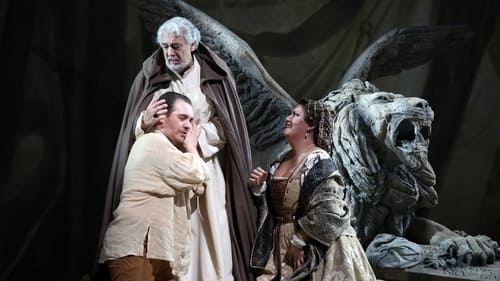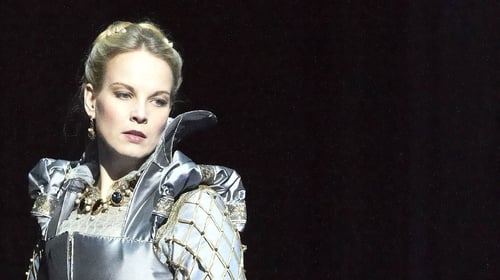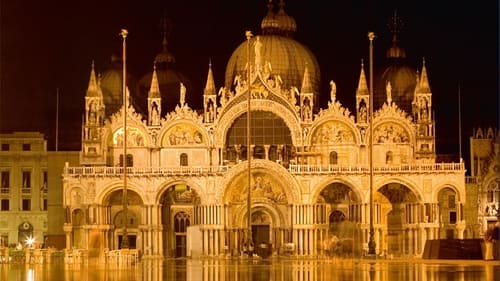Francesco Meli
Nacimiento : 1980-01-01, Italy

RADAMES
Love and duty collide and nations clash in Verdi's political drama, starring Elena Stikhina and Angel Blue and conducted by Antonio Pappano and Mark Elder.

Ernani is a love story about a young woman, Elvira, caught between three men: her lover, the nobleman-turned-outlaw Ernani; her guardian, the rich, elderly de Silva, who wants her for himself; and Don Carlo, the King of Spain who also has his eye on Elvira. Given the number of protagonists, it is also the story of a tragedy. Only 14 years after the premiere of Hernani, Giuseppe Verdi adapted Victor Hugo’s play into an opera to premiere at La Fenice, Venice in 1844. Ernani was an immediate and lasting triumph for the young Verdi, marking his prowess at adapting an historical event (the crowning of Charles V as emperor at Aachen Cathedral) to a psychologically convincing musical drama. The backdrop of three men paying court to one woman was the perfect foil for Verdi to explore the expressive qualities of three types of male voice. The tenor, the bass and the baritone.

Macduff

Riccardo

Cavaradossi

As Aragon descends into unrest, a count jealously fights for a noble lady's heart. But she has already given it to a passionate troubadour whose mother holds a terrible secret. This Verdi masterpiece overflows with dramatic tension and musical geniality, resulting in a story that increases in intensity throughout. Maria Agresta plays the unfortunate Leonora alongside Ludovic Tézier and Francesco Meli as her rival admirers in this new production at the Teatro Real.

Gabriele Adorno
Andrea De Rosa's production of Guiseppe Verdi's Liguria-set masterpiece about the eponymous 14th century Doge of Genoa. Ludovic Tezier is the Doge, Andriy Yurkevych conducts.

Carlo VII
"Giovanna d'Arco; ossia, la pulzella d'Orléans" is an operatic dramma lirico with a prologue and three acts by Giuseppe Verdi to an Italian libretto by Temistocle Solera. The opera partly reflects the story of Joan of Arc and is based on a play by Friedrich von Schiller, although claimed by the librettist to be "an entirely original Italian drama." If the thought of Anna Netrebko strutting her stuff in a suit of armour and tin hat sets your factor tingling then this is a must. It's an inconsistent opera but has some quite wonderful music along the way. The rest of the cast is good and the production won't offend either. Get it for Ms Netrebko's incredible performance alone.

Don José
This ever-popular opera is given a fresh point of view in Barrie Kosky’s highly physical production, originally created for Frankfurt Opera. The Australian director is one of the world’s most sought-after opera directors, whose Royal Opera debut with Shostakovich’s The Nose in 2016 was greeted with delight. For Carmen he has devised a far-from-traditional version, incorporating music written by Bizet for the score but not usually heard, and giving a new voice to the opera’s endlessly fascinating central character.

Radamès

Jacopo Foscari

Carlo VII

Jacopo Foscari
En su nueva vida como barítono, Plácido Domingo ha triunfado en el papel de Francesco Foscari en Los Ángeles, Londres y Viena. Ahora lleva el papel a La Scala de Milán, el teatro que es el símbolo de la ópera italiana. I due Foscari, estrenada en 1844, famosa por ser una de las óperas más oscuras de Verdi, es puesta en escena por Alvis Hermanis, que tuvo tanto impacto en el Festival de Salzburgo con 'Die Soldaten' e 'Il trovatore'. A Domingo se unen dos de los cantantes más emocionantes de Italia, la soprano Anna Pirozzi y el tenor Francesco Meli, y el aclamado director italiano Michele Mariotti. El Financial Times quedó profundamente conmovido por la actuación de Domingo y calificó de sublime su interpretación del papel.

Manrico
The Count Di Luna believes that his younger brother was murdered years before by a vengeful gypsy but still hopes that he may be alive. When he attempts to court the beautiful Leonora, he is enraged to discover that she has a lover – the troubadour, Manrico. Manrico and the Count duel, and afterwards Manrico reveals to Azucena, the woman he believes to be his mother, that when he had the opportunity to kill the Count he felt something holding him back.

Riccardo

Himself
The recording took place in Teatro Farnese di Parma, a kind of "mini-Verona" stage, but under roof. Probably good acoustics. But that doesn't rescue this perfomance of the Requiem mass, the fault is mainly being the conductor's, Yuri Temirkanov. He doesn't at all seems inspired of this work and not interested in whats happens on stage, if judged by the video. Particularly, he seems unintersted in the choir. The tenor, Francesco Meli, delivers a very inspired Ingemisco, but the other soloists are probably affected by the conductor.

Recorded live from the Teatro Regio di Parma, 8 October 2011

Riccardo, Earl of Warwick and governor of Boston
Part of Tutto Verdi series - Un ballo in maschera (2011) Parma. Based on a Scribe libretto and begun as 'Gustavo III' set in Sweden, it became 'Una vendetta in dominò' set in Germany, and finally 'Un ballo', set not in Sweden but in Boston, Massachusetts during the colonial era. These changes were caused by a combination of censorship regulations in both Naples and Rome, as well as by the political situation in France in January 1858.

Lord Riccardo Percy
Gaetano Donizetti and his librettist Felice Romani kept the focus of their opera ANNA BOLENA on the personal rather than the political in this fictionalized Tudor tale: Henry VIII of England wants to get rid of his second wife, Anne Boleyn, so that he can marry her lady-in-waiting, Jane Seymour. He brings Lord Richard Percy, Anne's first love, back from exile so that he can find an excuse to accuse her of adultery. With the unwitting aid of Smeaton, a court musician, and Lord Rochefort, Anne's brother, the trap is easily sprung. This 2011 live recording from the Wiener Staatsoper showcases Anna Netrebko as she "scored a personal triumph" in her debut as the hapless Tudor Queen, while her stage partners - notably Elīna Garanča as Jane Seymour and Ildebrando D'Arcangelo as Henry VIII - were likewise showered with critical acclaim.

Gabriele Adorno
Part of Tutto Verdi series - Simon Boccanegra (2010) Parma. Revised version (1881). 'Simon Boccanegra' is an opera with a prologue and three acts by Giuseppe Verdi to an Italian libretto by Francesco Maria Piave, based on the play 'Simón Bocanegra' (1843) by Antonio García Gutiérrez, whose play 'El trovador' had been the basis for Verdi's 1853 opera, 'Il trovatore'. Simon Boccanegra was first performed at Teatro La Fenice in Venice on 12 March 1857

Two queens on one island. A recipe for disaster. Especially as both have a legitimate claim to the other's throne. They are, after all, related... So the power politics are the name of the game. And, for reasons of state, one of the heads that wears a crown has to roll. Maria Stuarda was laid to rest for more than a hundred years, finally being revived in 1958 in Bergamo under conductor Oliviero de Fabritiis. However the real breakthrough for the opera finally came with Giorgio de Lullo's Florentine production for the Maggio Musicale in 1967 (with set design and costumes by Pier Luigi Pizzi, director, set designer and costume designer at La Scala in 2008). As the two queens, Leyla Gencer and Shirley Verrett, set the vocal standards. Since then, the triumph of Maria Stuarda has been unstoppable.

Oronte
I Lombardi alla prima crociata (The Lombards on the First Crusade) was Verdi’s fourth opera and received its first performance at La Scala, Milan, in February 1843. The grandiloquent subject matter is fleshed-out with broad-brushed musical and dramatic effects and lavish choral scenes created a correspondingly impressive impact. A great success in Milan, it spread to the rest of Europe within a matter of only a few years.

Il conte d’Almaviva

Himself
The production itself is quite beautiful: recorded in the Basilica di San Marco in Venice in November 2007, it highlights the cathedral's splendor, the reverent audience, the soloists, orchestra and chorus with near-perfect cinematography. The soundtrack is also acceptable, which may have been quite a task to achieve, given the Basilica's over-reverberant acoustics. Alas, the performance itself does not rise to the occasion. Despite the occasional minor insecurity in ensemble and a visible lack of joy, the Symphonica Toscanini musicians play well, the Coro del Maggio Musicale Fiorentino members sing equally well, and the soloists are more than adequate, almost tangibly trying to excel.














